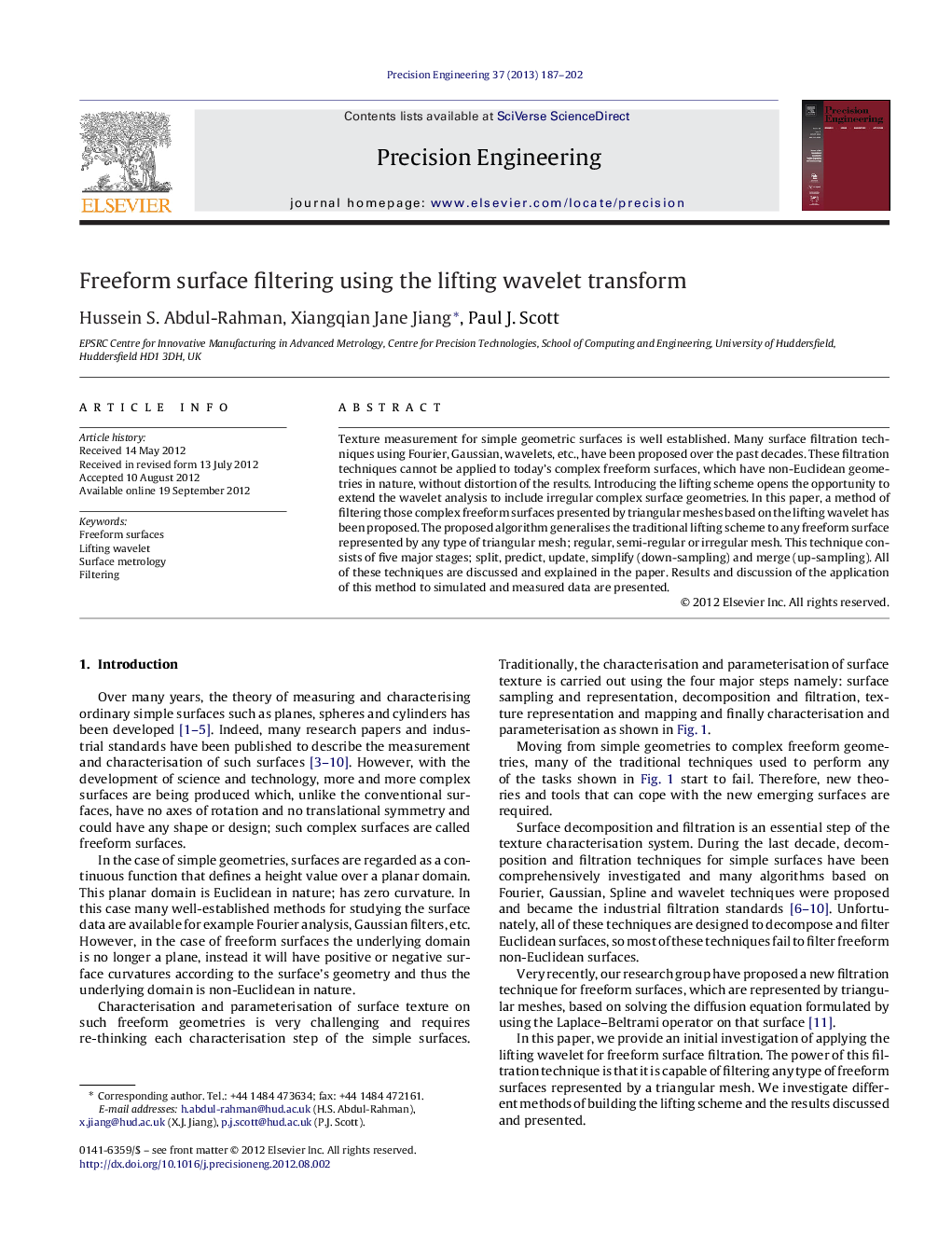| Article ID | Journal | Published Year | Pages | File Type |
|---|---|---|---|---|
| 806638 | Precision Engineering | 2013 | 16 Pages |
Texture measurement for simple geometric surfaces is well established. Many surface filtration techniques using Fourier, Gaussian, wavelets, etc., have been proposed over the past decades. These filtration techniques cannot be applied to today's complex freeform surfaces, which have non-Euclidean geometries in nature, without distortion of the results. Introducing the lifting scheme opens the opportunity to extend the wavelet analysis to include irregular complex surface geometries. In this paper, a method of filtering those complex freeform surfaces presented by triangular meshes based on the lifting wavelet has been proposed. The proposed algorithm generalises the traditional lifting scheme to any freeform surface represented by any type of triangular mesh; regular, semi-regular or irregular mesh. This technique consists of five major stages; split, predict, update, simplify (down-sampling) and merge (up-sampling). All of these techniques are discussed and explained in the paper. Results and discussion of the application of this method to simulated and measured data are presented.
► The need of new techniques that capable of representing the emerging freeform surfaces. The paper discusses different techniques that could be used. ► A literature review of using the second generation wavelets and the lifting scheme to decompose surfaces represented by triangular meshes. ► A generalised lifting scheme that is used to filter the texture of freeform surfaces. The algorithm explains in details how to construct the split, predict and update operators to filter the texture of freeform surfaces.
